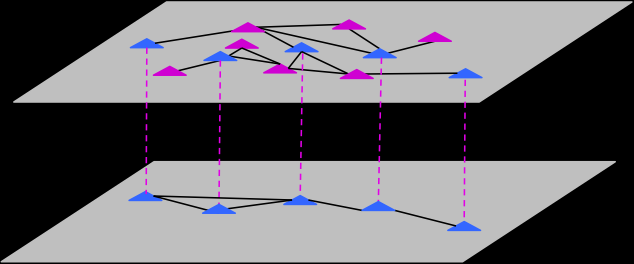Evolution of complex topologies

Complex adaptive systems are able to dynamically adjust their structural properties and to self-heal in the event of a failure. They are characterized by a variety of interacting components, generally interrelated by complex evolving topological patterns. Examples range from socio-technological infrastructures (ICT) to living cells, spanning across different scales in digital and physical domains. Our current understanding of their interaction patterns has experienced a dramatic boost thanks to the development of the new science of networks. Complex adaptive systems represented as networks exhibit rich evolving and multi-level topologies, which provide a better understanding of the relation between structure and function as well as its effects on a broad class of dynamical processes running on top of them. Network science stands thus as one of the most useful tools for complex systems research. Recently it has observed that most of these real structures evolve, with connections appearing and disappearing at various time scales, a fact particularly evident in social interactions, and which is captured in the broader paradigm of temporal networks. On the other hand, an even more complex picture emerges when considering that many real networks often show interactions of strictly different nature. This has led to the concept of multilayer (multiplex) networks, composed by layers of networks with edges of different kinds, superimposed on a set of fixed nodes. Actively transforming topological structures abound also in living matter, having inspired engineers and material scientists research for decades. The ability of cells to migrate, self-defend or self-repair turns them into the ultimate smart material. Biological materials have inspired the active research field of materiomics, connecting biology, chemistry and materials science, that is defined as the study of the properties of natural and synthetic materials by examining fundamental links between processes, structures, and properties at multiple scales, including their interdependence, by using experimental, theoretical, or computational methods. This term, coined in analogy to genomics or proteomics, finds applications in the transfer of biological material principles into biomimetic and bio-inspired applications and in the study of interfaces between living and non-living systems. Research carried out until now in these fields has isolated different independent levels of organization and interdependence. Moreover, network science has usually focused on static networked structures that do not change over time. The temporal dimension of the topology of real systems, coupled to their multilayered structure, raises new challenges in their study. In this research project, we aim at advancing in our understanding of such challenges with an integrative viewpoint. Taking advantage of the team members' expertise and complementarity, we plan to attack a diversity of problems to try to gain further insight on the role of spatio-temporal evolving topologies on complex systems.




